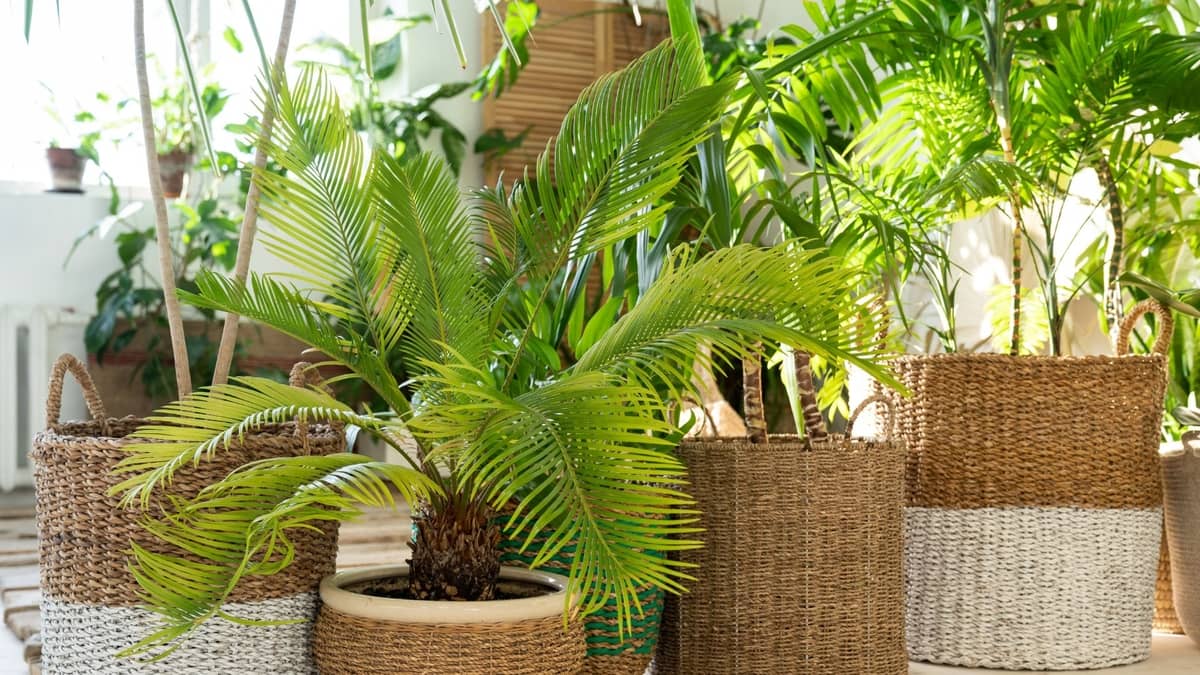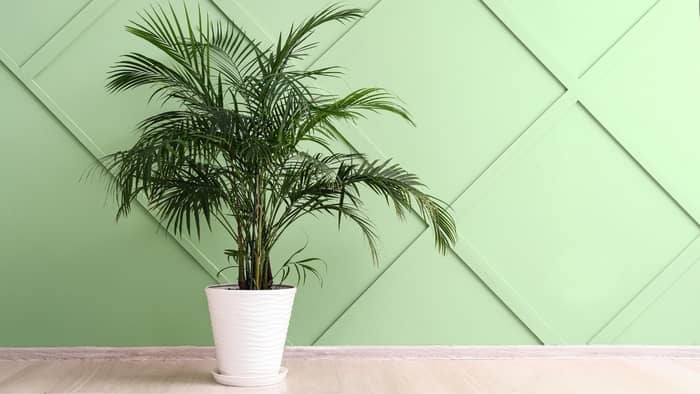Last Updated on September 13, 2022 by Griselda M.
Is it possible to grow a palm tree indoors? Let’s look at a step-by-step guide on how to grow a palm tree indoors.
Palm trees are one of the most common tropical trees and can be grown both in the wild and in greenhouses. However, they do require a lot of light. It is therefore important that the plant gets the right amount of sunlight to thrive and grow properly.
When it comes to growing your palm plant indoors, there are several factors to consider when selecting your palm tree.
- First, make sure that your palm tree is strong enough to withstand the indoor environment and temperatures.
- Second, consider its growth rate. A fast-growing palm tree will need more light than a slower-growing one. Finally, make sure that you select a palm tree that has good resistance to pests and diseases.
Step-By-Step Guide On How To Grow a Palm Tree Indoors
Step 1: Choose a palm tree that has the right growth rate for your area.
Generally, the smaller the palm tree, the faster it will grow. Palm trees can be grown in a pot, or in the ground. You should also consider what kind of palm tree you are looking for. Some palm trees are better suited for a large indoor garden than others.
Step 2: Choose the right pot for your plant.
Another important consideration is the size of the pot that you will grow your palm tree in. The size of the pot should be large enough to accommodate the plant when it starts growing and to grow a little bit larger each year. However, make sure that the pot is not too big. A pot that is too big may hamper the growth of your palm, so choose the right size pot for the right plant size.
Learn more about: How to Make Compost for Indoor Plants?
Step 3: Place it in an ideal location.
Choose a sunny spot with good air circulation. Make sure that it receives direct sunlight for at least half of the day. It’s also important to keep the pot out of the reach of pets and children. If you live in the city, choose a spot with plenty of airflow. If you live in the country, you should place your palm tree in a protected area, such as a patio, garden, or greenhouse.
Step 4: Plant the palm tree in the pot.
Water your plant until the soil is completely moist but not soggy. You can fertilize the tree by adding a good quality fertilizer into the soil once every two months. Fertilizing the palm tree will improve its overall health and growth. But do not over-fertilize your palm tree because it may end up having negative impacts on your plants, and you do not want that.
Step 5: Water the palm tree regularly during the first year.
You should water your palm tree every week or so to ensure that the tree gets enough moisture. If you live in the city, you should water your palm tree twice a week. In the country, you should water your palm tree once a week.
After the first year, you should only water your palm tree once every two months, or as needed depending on the dryness level of the soil. This will help keep the pot dry so that the soil doesn’t become too wet. It will also help keep the roots of your palm tree healthy. You should also fertilize your palm tree once every two months.
Care and Maintenance Of Palm Tree Indoors – Tips!
Palm trees are very hardy plants and can grow outdoors year round. They are much easier to care for inside where the climate is more suitable. However, if you want a palm tree indoors, there are a few things you should know before buying one.
Tip 1: You can keep and grow your palm tree indoors during the winter months when the temperature is lower to protect it from the cold.
Tip 2: When you first bring the palm tree in, be sure to check the roots carefully to make sure they are not dry or cracked. When it comes to caring for your palm tree, you can do a few things.
Tip 3: If you have artificial light, be sure to turn it off at night because too much light at night will cause the leaves to yellow and fall off.
Tip 4: It’s also important to water your palm tree regularly and let it sit in a saucer of water for a few hours before you water it again.
Tip 5: Also, be sure to keep the soil moist but not wet.
Tip 6: If you notice that the top of the palm tree is turning brown or dying, you should cut it back by about half so that new growth can develop.
Tip 7: If you want your palm tree to grow taller, you can prop up the trunk with a stick or other object.
Read more about: How To Grow A Coconut Tree Indoors
In Conclusion – How To Grow a Palm Tree Indoors
This guide will help you learn how to grow a palm tree indoors while providing the right growing conditions.
A palm tree needs to be placed in a large pot with enough space for the roots to spread out and not touch the sides of the pot. It is best to place the palm tree in a pot that is at least 3 inches wider than the trunk of the tree. This is important because the roots need to grow down and outward to prevent the pot from getting too full and the roots from touching the sides of the pot.
Frequently Asked Questions
What is the easiest palm tree to grow indoors?
The parlor palm (Chamaedorea elegans), is the easiest palm tree to grow indoors. It is tolerant of a wide range of environmental conditions and does not require too much light. It is also quite small in size. These qualities and more make it an ideal indoor palm plant.
How long does an indoor palm tree take to grow?
Indoor palms generally take one to two years to grow to maturity. You will need to wait until the fronds reach a height of about four to six inches before you can plant them outdoors.
Where should you put a palm tree in your house?
Ideally, you should put your palm tree in a shaded area with southern exposure. The best place for your palm tree is in an area that receives at least 6 hours of sunlight per day. A sunny spot in a room or on a balcony is ideal.
Do indoor palms need misting?
You should mist your palm tree once every two weeks to keep it healthy and happy. This is especially important during the spring and summer months. If you live in a hot climate, misting may be required more often.

